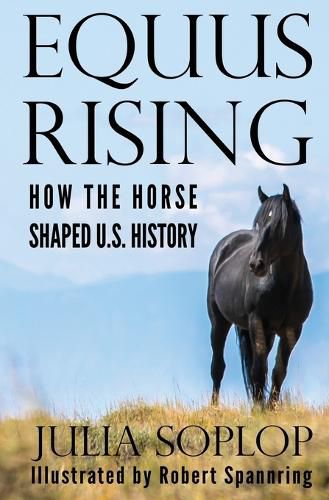Readings Newsletter
Become a Readings Member to make your shopping experience even easier.
Sign in or sign up for free!
You’re not far away from qualifying for FREE standard shipping within Australia
You’ve qualified for FREE standard shipping within Australia
The cart is loading…






This title is printed to order. This book may have been self-published. If so, we cannot guarantee the quality of the content. In the main most books will have gone through the editing process however some may not. We therefore suggest that you be aware of this before ordering this book. If in doubt check either the author or publisher’s details as we are unable to accept any returns unless they are faulty. Please contact us if you have any questions.
WINNER OF AN INDEPENDENT PUBLISHER (IPPY) BOOK AWARD (GOLD MEDAL)
WINNER OF A FEATHERED QUILL BOOK AWARD (GOLD MEDAL)
Weapon. Legend. Energy source. Shaper of cultures. Center of controversy. Throughout U.S. history, the horse has served as one of the most powerful influences on the country’s development. Beginning fifty-five million years ago with the evolution of the horse across the Great Plains, this story charts its extinction in North America, followed by its reintroduction to the continent by the Spanish. The eventual acquisition of Spanish horses by the native peoples of the plains had profound consequences for the continent’s future: it resulted in the explosion of wild horses across the West and unleashed some of the most talented and brutal mounted warriors in the world, the Comanche, who staved off European-American development of much of the plains for nearly two centuries. From there, the story tracks the horse’s incredible contributions-through warring and racing and hauling, through companionship and servitude and strength-across the broad arc of the country’s next three hundred years. Soplop employs the horse as a narrative thread not only to bind seemingly disparate events, but also to allow for the inclusion of figures often written out of traditional histories: women and minorities. Through a modern, unconventional lens, she skillfully weaves together science, policy, literature, and history to trace the fascinating story of how one animal shaped the nation. Captivating pen and ink illustrations by Montana artist Robert Spannring, interspersed with Soplop’s stunning photography, add further depth and visual interest.
$9.00 standard shipping within Australia
FREE standard shipping within Australia for orders over $100.00
Express & International shipping calculated at checkout
This title is printed to order. This book may have been self-published. If so, we cannot guarantee the quality of the content. In the main most books will have gone through the editing process however some may not. We therefore suggest that you be aware of this before ordering this book. If in doubt check either the author or publisher’s details as we are unable to accept any returns unless they are faulty. Please contact us if you have any questions.
WINNER OF AN INDEPENDENT PUBLISHER (IPPY) BOOK AWARD (GOLD MEDAL)
WINNER OF A FEATHERED QUILL BOOK AWARD (GOLD MEDAL)
Weapon. Legend. Energy source. Shaper of cultures. Center of controversy. Throughout U.S. history, the horse has served as one of the most powerful influences on the country’s development. Beginning fifty-five million years ago with the evolution of the horse across the Great Plains, this story charts its extinction in North America, followed by its reintroduction to the continent by the Spanish. The eventual acquisition of Spanish horses by the native peoples of the plains had profound consequences for the continent’s future: it resulted in the explosion of wild horses across the West and unleashed some of the most talented and brutal mounted warriors in the world, the Comanche, who staved off European-American development of much of the plains for nearly two centuries. From there, the story tracks the horse’s incredible contributions-through warring and racing and hauling, through companionship and servitude and strength-across the broad arc of the country’s next three hundred years. Soplop employs the horse as a narrative thread not only to bind seemingly disparate events, but also to allow for the inclusion of figures often written out of traditional histories: women and minorities. Through a modern, unconventional lens, she skillfully weaves together science, policy, literature, and history to trace the fascinating story of how one animal shaped the nation. Captivating pen and ink illustrations by Montana artist Robert Spannring, interspersed with Soplop’s stunning photography, add further depth and visual interest.